It’s only been five or six years since the smartwatch evolved into a device that truly delivers what most of us expect from a smart wearable, including features like texting, calling, fitness-tracking, and viewing news alerts and other notifications. But it was a long, long road to get here.
Companies have been trying to smarten up watches for more than 40 years now. It started with a move to digital numeric displays, then was followed by an avalanche of questionable features, unorthodox designs, and functionality that was passed off as smart, but in hindsight, was kind of dumb to try and strap to your wrist. Let’s take a walk down memory lane to remember all the terrible wearables that walked so the Apple Watch could fly.
Hewlett-Packard HP-01 Calculator Watch
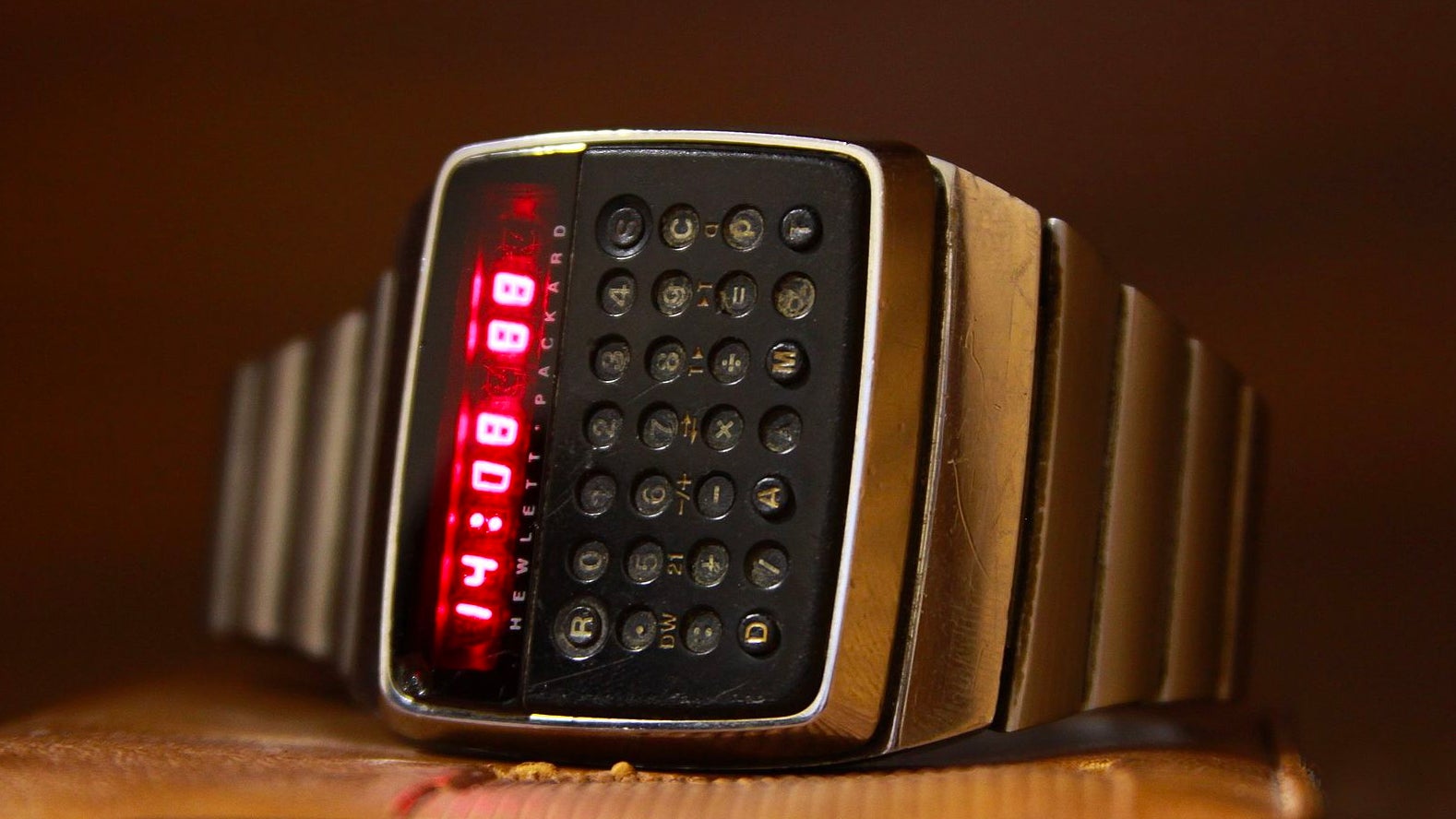
The calculator watch remains the iconic symbol of the nerd, and while they were plentiful in the ‘80s, the original calculator watch actually dates back to 1977 with Hewlett-Packard’s HP-01. It arrived shortly after LED digital watches did and featured a seven-digit display. That made it hard for millionaires to calculate their net worth, but it was easy for figuring out how much you needed to tip at a restaurant. The HP-01’s keys were so tiny the watch required the use of a stylus to operate, and it was powered by three batteries — two of which were needed for the display alone. The cheapest version was $US450 ($629), which would put the price at just over $US2,000 ($2,797) today when adjusting for inflation.
Casio Data Bank Calculator Watch
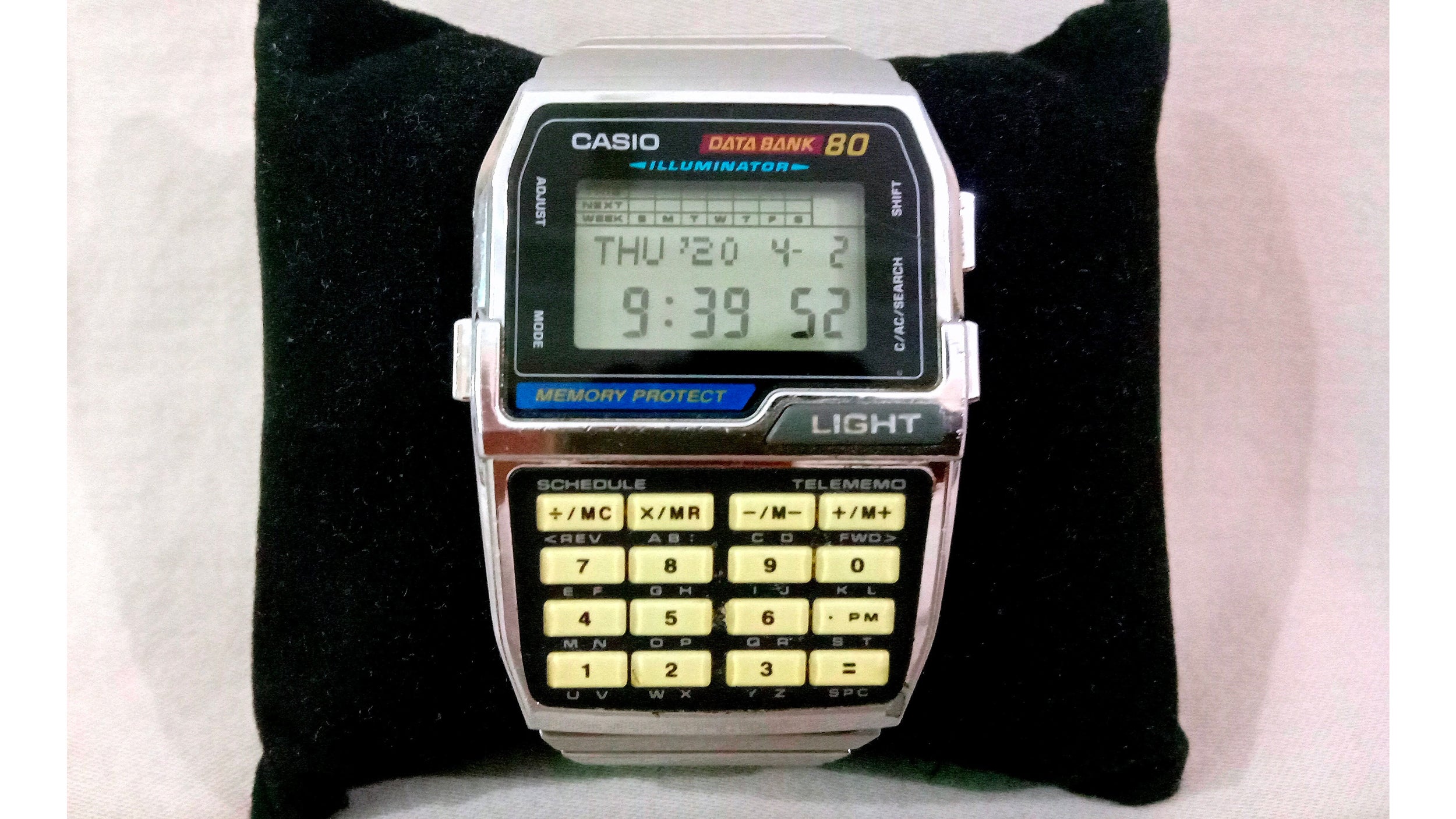
Hewlett-Packard may have invented the calculator watch, but Casio took it to the next level. In addition to performing basic calculations, the Casio Data Bank line added a bunch of extra storage (though minuscule by today’s specs) for storing information about birthdays, important meetings, and phone numbers for your closest friends, family, and co-workers. Everything had to be entered on a tiny fingerprint-friendly keyboard, and the Casio Data Bank introduced the now iconic (?) “bent” watch design as the screen and keyboard both grew in size.
Casio Data Bank DBA-800 Auto-Dialling Digital Watch
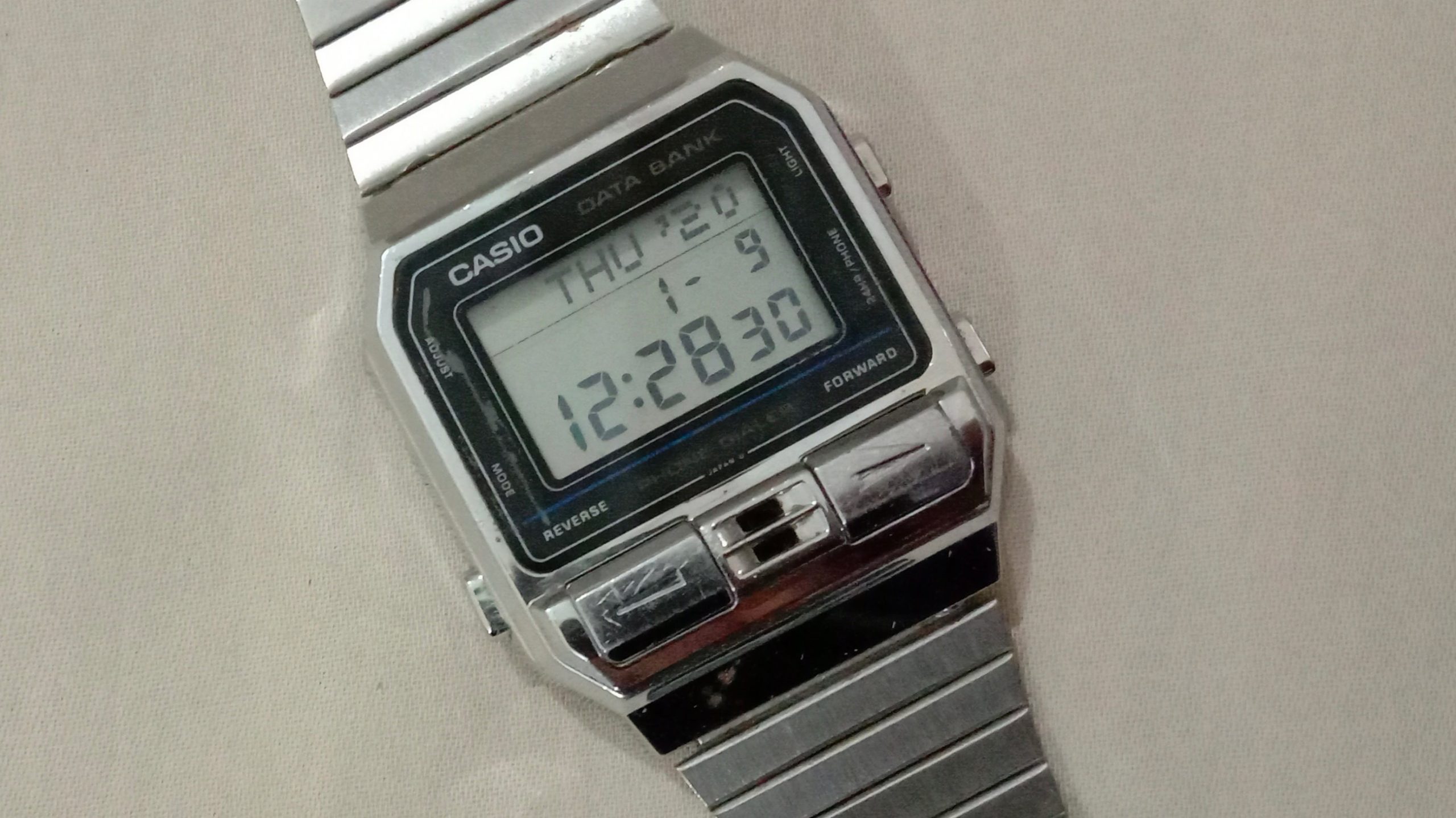
Making phone calls on a smartwatch is trivial now, but in the ‘80s it required users to look at both a watch’s screen and the keypad on a touchtone phone to manually enter someone’s digits. That was obviously too much of an ask for some, so Casio created the Data Bank DBA-800, which replaced the numeric keypad with a speaker that, when placed next to a phone’s mouthpiece, would automatically generate the tones needed to dial a number. But the ease of use that feature introduced was negated by the fact that names and phone numbers had to be entered using just two buttons, requiring users to step through the entire alphabet to slowly spell out someone’s name. One step forward, two steps back.
Casio CMD-40 Wrist Remote Controller Calculator Watch

Not content with making nerds’ lives easier with a watch that can automatically dial phone numbers, Casio expanded its calculator watch line with a collection that could save users the trouble of hunting down their TV remotes. The Wrist Remote Controller line did just that: strapped an infrared TV remote to the wearer’s list, complete with extra buttons on the side for power, switching inputs, and controlling the volume. The numeric keypad allowed the timepiece to still function as a tiny calculator, but many of those buttons did double-duty for controlling VCRs and cable boxes, too. But the best feature was that the watch was a learning remote, meaning that it could also be taught to take over the more obscure functions of a home theatre setup, or even control other devices compatible with an IR remote.
Timex Data Link Digital Watch
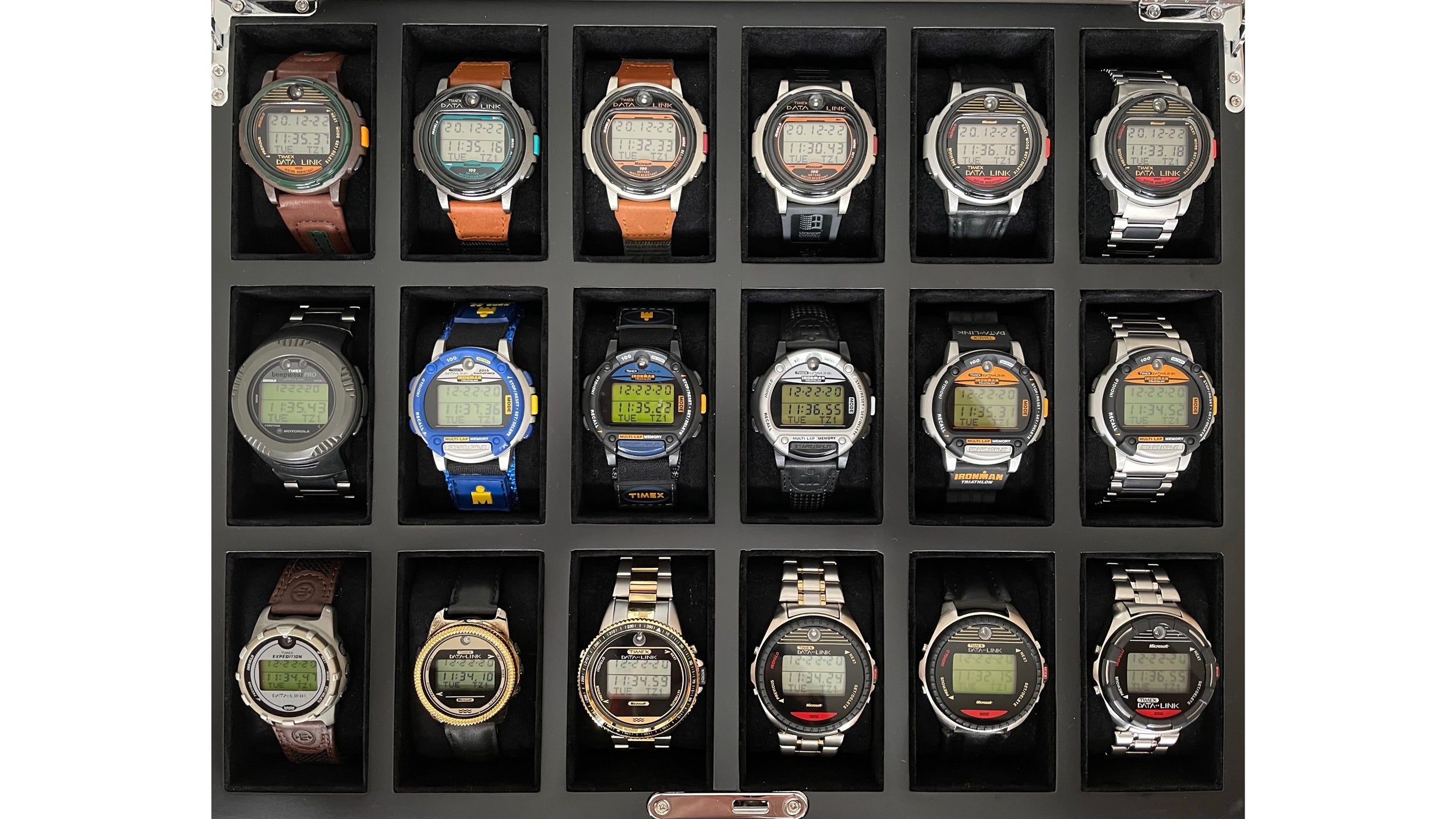
Getting your calendar appointments onto a modern smartwatch is effortless, because your always-connected smartphone shares all of that information automatically. But 27 years ago nobody had a smartphone, and Bluetooth was still mostly known as the nickname for an ancient king of Denmark and Norway, so Timex’s solution to syncing information like a phone book and calendar from a computer was the Data Link watch. It featured no wireless connectivity, but instead used an optical sensor that read data through a series of flashing bars while you held the watch up to a computer screen — an approach that sounds downright primitive.
Casio WQV-1 Wrist Camera
A digital camera still isn’t a feature you’ll find on modern smart watches (you’ll need a chunky $US300 ($419) strap to add that functionality to an Apple Watch), but back in 2000, Casio made that idea a reality with the WQV-1 Wrist Camera. As you can imagine, it was chock full of compromises. Photos were limited to 0.025-megapixel, 16-bit greyscale snaps, but it meant you could squeeze 100 of them onto the watch’s 1MB of memory. The screen was equally low-res, but still allowed users to browse their camera rolls, while a built-in IR transmitter and receiver allowed the WQV-1 to wirelessly send snaps to a PC or another wrist cam. Everything about this watch was a disappointment, which probably explains why companies still don’t make wrist-worn cameras even today.
Casio Pro Trek PRT-1GP GPS Digital Watch
One of the biggest issues with the earliest attempts to make watches smart was that the devices ended up being monstrous on the wrist with the added electronic functionality, and no wearable in history is a better example of that than the Casio Pro Trek PRT-1GP. Released in 1999, it was the first watch to include built-in GPS functionality, and while it could display raw positional data in latitude and longitude, it also worked as a sort of smart digital compass guiding the wearer back to a specific location using directional indicators and distance measurements. It didn’t display maps, but on the wrist of a seasoned hiker it was a legitimately useful tool that somehow managed to muster a full year of battery life. (With limited GPS use, of course.)
Microsoft SPOT MSN Direct Watches
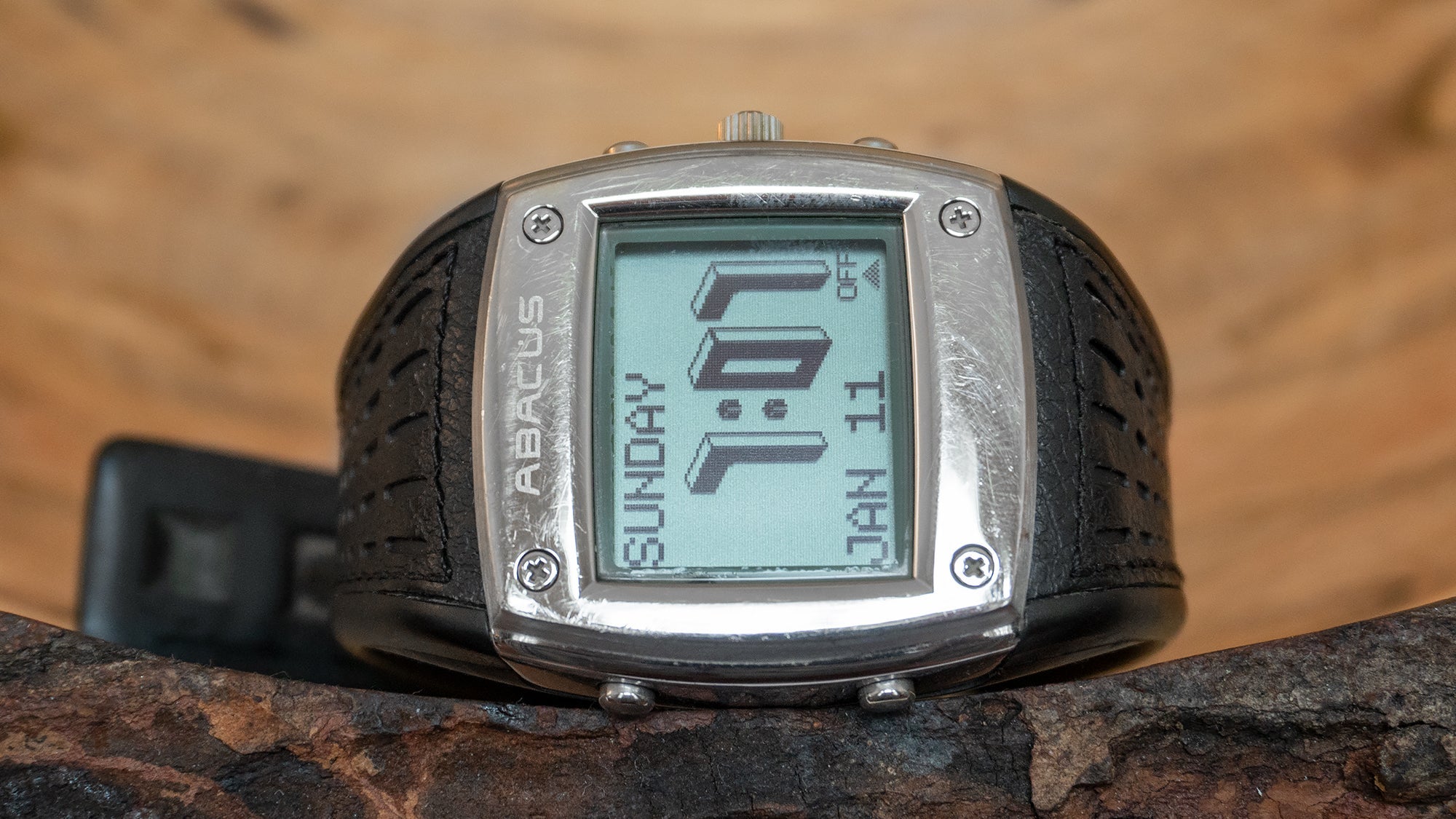
The closest the world got to a capable smartwatch before the Pebble arrived were timepieces from companies like Fossil, Citizen, and Suunto that all worked on Microsoft’s SPOT platform (short for Smart Personal Objects Technology) and the company’s MSN Direct service. Well before smartphones as we know them were a thing, the SPOT watches debuted in 2004 and could wirelessly download information like calendar appointments, breaking news, and sports scores over FM broadcasts in major cities around the world. The watches were strictly an information consumption device and couldn’t be used to send messages or emails, and while the technology was very clever for the early aughts, by 2008 the watches had ceased production.
Casio WMP-1 MP3 Watch
Heading out the door for a run with your tunes while leaving your smartphone at home is no problem these days — wearables like the the Apple Watch let you stream music from the cloud or sync songs for offline listening. But the late ‘90s was the wild west of digital music players, and before the iPod came along in 2001, companies like Casio were stuffing MP3 players into digital watches like the WMP-1. It had enough storage for maybe half an album, and connecting a pair of wired headphones was your only option, which required an extra accessory to be attached to the side of the already chunky watch to add a headphone jack. How you were supposed to run while wearing this without yanking headphones out of your ears is a mystery to us.
Casio VivCel VCL-110 Call Alert Digital Watch
If you’re old enough to remember a time when the cheap desktop speakers connected to your PC would make a buzzing sound when your mobile phone started ringing, then you more or less understand the concept behind the Casio VivCel VCL-110. The watch had a built-in antenna that could detect when your nearby smartphone was responding to an incoming call from a local cell tower, and then start to buzz with an on-screen animation to alert you when you were about to get a ring. It was a weird concept for modern smartphone users whose devices rarely leave their pockets, but it provided a far more discreet way to stay in the know about phone calls while keeping a silenced phone out of sight.
Garmin Epix Touchscreen GPS Navigator Watch
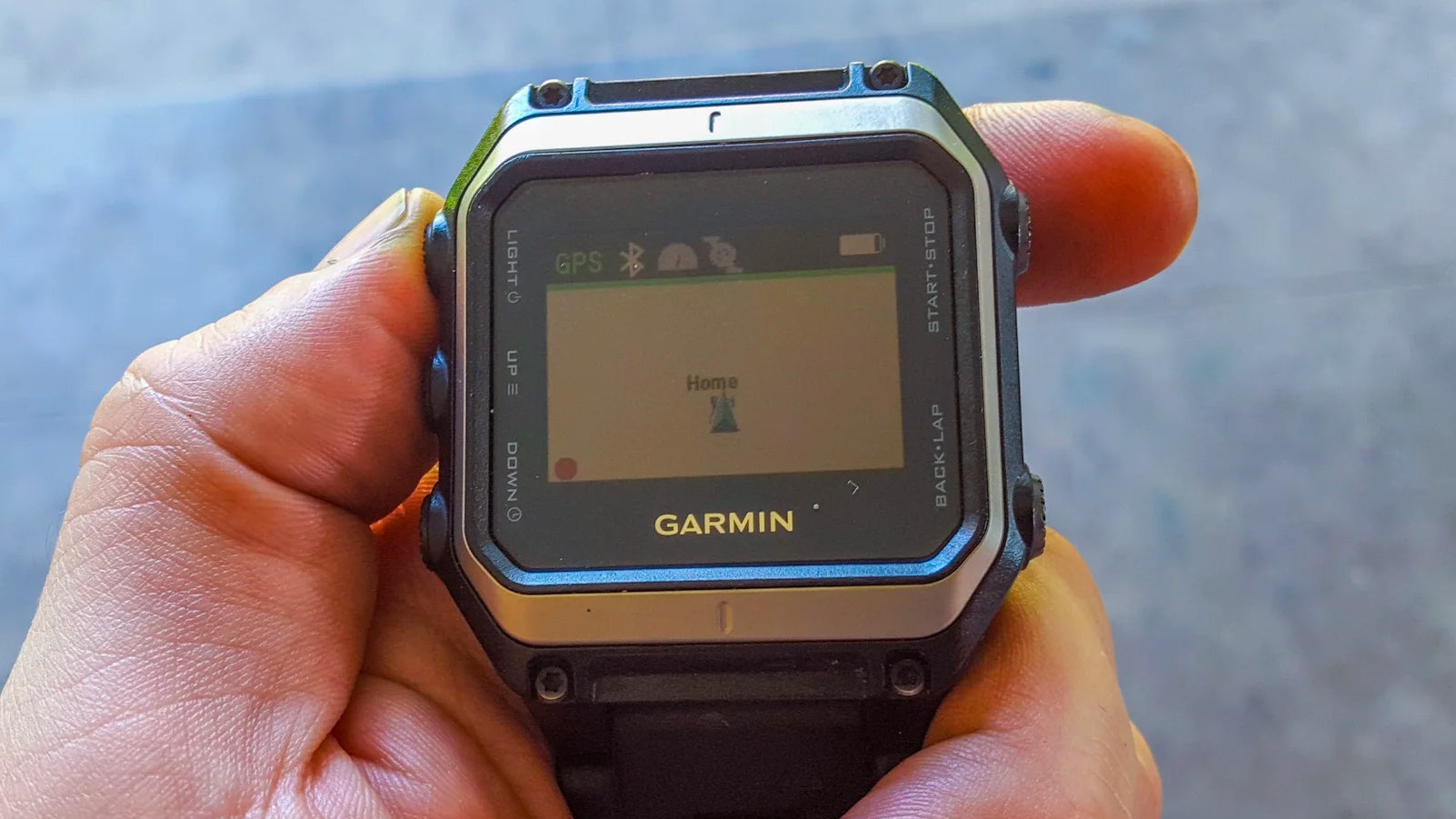
As the rise of smartphones rendered dedicated handheld GPS navigators obsolete, Garmin decided the devices might be more appealing if integrated into a watch. The Garmin Epix was one of the first digital watches to use GPS, with a detailed on-screen app to aid navigation, but when we went hands on it with in 2015 — shortly after the first Apple Watch went on sale — it quickly became clear that Garmin’s take on the smartwatch probably wasn’t where these devices were going. As a fitness tracker it was solid, but as a GPS navigator it was severely lacking, often neglecting to let our tester know that between him and his destination were obstacles like busy streets, entire buildings, and even mountains. At $US600 ($839) it was also considerably more expensive than Apple’s solution.
